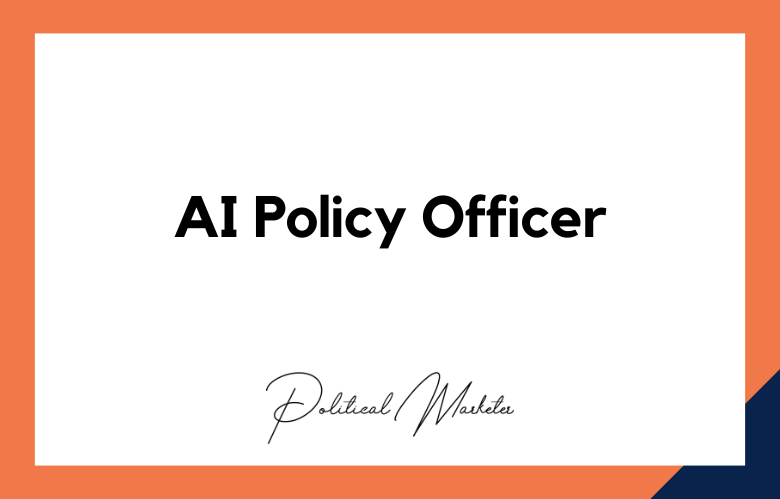Election season has always been the most critical time in the life of political parties. It’s a time when they must put their best foot forward to appeal to the public and secure their votes.
In today’s digital age, effective marketing communication has become more critical. A political party can quickly get lost in the noise if they don’t create a strong, consistent, and engaging message.
Creating a marketing communications framework can help political parties streamline their communication efforts and deliver a cohesive message across all platforms.
Discuss the elements of a practical marketing communications framework for political parties.
The Marketing Communications Framework for Political Parties: An In-Depth Look?
In today’s digital age, political parties recognize the need to engage voters through various channels. One of the critical aspects of any political campaign is the marketing communications framework utilized by the political party.
An effective campaign strategy is essential to achieve the desired outcome by creating a compelling message that resonates with the masses.
We explore the marketing communications framework for political parties, highlighting key strategies and tactics they use to communicate their message.
Political parties’ marketing communications frameworks comprise several elements that effectively convey the party’s message to voters.
The first element is the party’s platform to communicate its message to voters. This platform could be television ads, print publications, billboards, or social media sites.
Each platform has its strengths and weaknesses, which become essential to exploit depending on the audience you are trying to reach.
A Framework for Effective Marketing Communications for Political Parties?
Politics is all about communicating with people and winning them over with ideas. Political parties utilize a multitude of techniques to influence public opinion.
They conduct rallies and public events and utilize social media platforms and traditional media to reach out to their supporters. But in today’s world, with so much happening around us, it’s not enough to communicate without a structured plan.
It is increasingly important to have a framework for effective marketing communications for political parties.
We will discuss what a framework for effective marketing communications means and what components should be included.
A marketing communications framework for political parties?
Election season is upon us, and with it comes the need to develop an effective marketing communications strategy for political parties.
Political campaigns are about convincing voters, building relationships, and creating a brand image that resonates with the electorate.
A marketing communications framework can help political parties achieve these goals. I will outline the components of an effective marketing communications plan for political parties.
Crafting a Winning Marketing Communications Framework for Political Parties?
Political parties always have a narrative to sell. They spin their policies, create slogans, and tout their achievements, all in a bid to win the hearts and minds of the electorate.
However, many parties often need a clear and coherent marketing communication strategy, making their message sound disjointed and confusing.
That is why having a framework that outlines how to communicate your message to the right audience through the proper channels is essential.
We will explore a marketing communications framework for political parties that will help them effectively communicate their message and resonate with their target constituents.
Understanding the Marketing Communications Framework?
The marketing communications framework is a strategic approach that political parties use to convey their party messages to voters. It involves coordinated communication with various target audiences, including voters in different segments.
These communication channels are carefully selected to ensure maximum reach and effectiveness. The framework includes various elements such as advertising, direct marketing, public relations, personal selling, and promotional events.
The Role of Advertising in Political Marketing?
Advertising is one of the political parties’ most crucial marketing communication elements. It encompasses various strategies such as print, broadcast, and digital media channels.
Advertising aims to create a positive image of political parties and their candidates and influence and persuade voters to support them. The messages in political ads are often emotional, appeal to the electorate’s values and aspirations, and connect with their emotions.
The Importance of Public Relations?
Another essential element in the marketing communications framework for political parties is public relations. Public relations is building relationships and communicating with the public, including journalists and media houses.
Political parties use public relations to control their image in the media and create a positive public perception of their party. This is critical in building trust with the voters, creating a long-lasting impression that can last beyond the election period.
Best Practices For Marketing Communications Framework?
Define Your Target Audience
The first step in creating a practical marketing communications framework for political parties is identifying your target audience. Every political party has a specific set of voters they want to appeal to.
So, it’s crucial to understand their demographics, socio-economic backgrounds, interests, and pain points. This information will help you create a targeted message that resonates with your audience.
Develop a Strategic Message
Once you know your target audience, it’s time to craft your message. A strategic message should communicate your party’s beliefs, values, and vision.
Make it clear and concise, and avoid jargon, complex language, and technical terms. It is essential to develop a message that speaks to the heart of voters and resonates with their emotions.
Choose the Right Channels
The next step is determining the channels you will use to deliver your message.
There are many channels that political parties can use, including social media, email, print, television, radio, and billboards.
Consider which channels your target audience uses the most and which are the most effective in delivering your message.
All channels must carry a consistent message to avoid confusion and enhance your credibility.
Create a Content Calendar
Create a content calendar to ensure your message is delivered consistently and timely.
This calendar should identify the key messages, the channels to be used, and the dates when messages need to be released.
Creating a calendar can help you keep track of your communications efforts, avoid redundancy, and stay on track with your message.
Monitor and Measure Your Results
Lastly, it’s crucial to monitor and measure the results of your communication efforts. You need to track your data regularly and measure progress towards predefined goals.
Use analytics tools to measure the impact of your content and identify areas that need improvement. This will help you fine-tune your communication efforts to reach your target audience effectively.
Conclusion:
Marketing communication is an essential element in any political party’s success. By creating a communication framework, parties can streamline their messaging, reach their target audience, and build a cohesive message across all channels.
As with any other marketing effort, monitoring and measuring results to refine messaging and optimize efforts are crucial. By doing so, political parties can capture more votes, build strong relationships with their audience, and achieve their goals.
Call: +91 9848321284
Email: [email protected]
Marketing Communications Framework for Political Parties: FAQs
What is a political marketing communications framework?
It is a structured strategy that outlines how political parties convey messages to target audiences through various channels to shape perceptions and gain support.
Why is a structured communications framework critical in politics?
A clear framework ensures consistency, coherence, and relevance across all messaging, helping a party remain on-brand while addressing diverse voter groups.
How can political parties use storytelling in their communication strategy?
Storytelling helps humanize the party’s mission by sharing relatable narratives, personal stories, and emotional appeals that connect with voters on a deeper level.
What role does message discipline play in political communication?
Message discipline ensures that every spokesperson and campaign material aligns with core narratives, avoiding conflicting or diluted messages.
How do you define key audience segments in political campaigns?
Analyzing demographics, psychographics, geographic data, and voter behavior to tailor specific messages that resonate with each segment.
What is the role of digital media in modern political communication?
Digital media offers targeted outreach, real-time engagement, and scalable amplification of messages across platforms like social media, email, and video.
How can political parties ensure message consistency across platforms?
Through centralized content planning, branding guidelines, and communication protocol training for all campaign staff and volunteers.
What is a campaign message pyramid?
It is a visual hierarchy in which the core campaign message is at the top, supported by key themes, policy positions, and tailored messages for subgroups.
Why should political parties adopt a multi-channel communication strategy?
Because voters consume information across different platforms, TV, radio, print, online, and mobile, integrated outreach is required for maximum impact.
How can parties use data to optimize communication efforts?
By tracking engagement metrics, polling data, and sentiment analysis to refine messages, test formats, and better understand voter response.
What is the difference between tactical and strategic messaging?
Strategic messaging focuses on long-term party positioning, while tactical messaging adapts to short-term events, news cycles, or audience reactions.
How should political parties handle crisis communication?
To protect the reputation, prepare a crisis protocol, assign roles, craft holding statements, and respond transparently and promptly.
What types of content should a political communication plan include?
Speeches, press releases, infographics, videos, social posts, manifestos, newsletters, and voter education material aligned with the core message.
How can visuals enhance political communication?
Visuals such as campaign logos, colors, slogans, and imagery increase recall, evoke emotion, and reinforce identity and trustworthiness.
What is the role of spokesperson training in communications?
Spokespersons must be trained to deliver consistent, persuasive, and clear messages while handling tough questions and public scrutiny.
How does timing influence message delivery?
Delivering messages at the right moment, such as during key news cycles, elections, or debates, ensures greater visibility and relevance.
What are the common mistakes in political communication?
Inconsistency, overuse of jargon, ignoring feedback loops, lack of personalization, and failure to adapt to digital-first audiences.
How can internal communication help campaign execution?
Strong internal communication ensures all members are aligned, informed, and motivated, reducing miscommunication and inefficiency.
Why should political parties review and update their communication strategy?
Because public sentiment, media landscapes, and political dynamics evolve, strategies must adapt to stay relevant and practical.
How do political parties measure the success of their communication efforts?
Through KPIs such as message recall, voter engagement, media coverage, polling shifts, digital metrics, and overall campaign sentiment.










